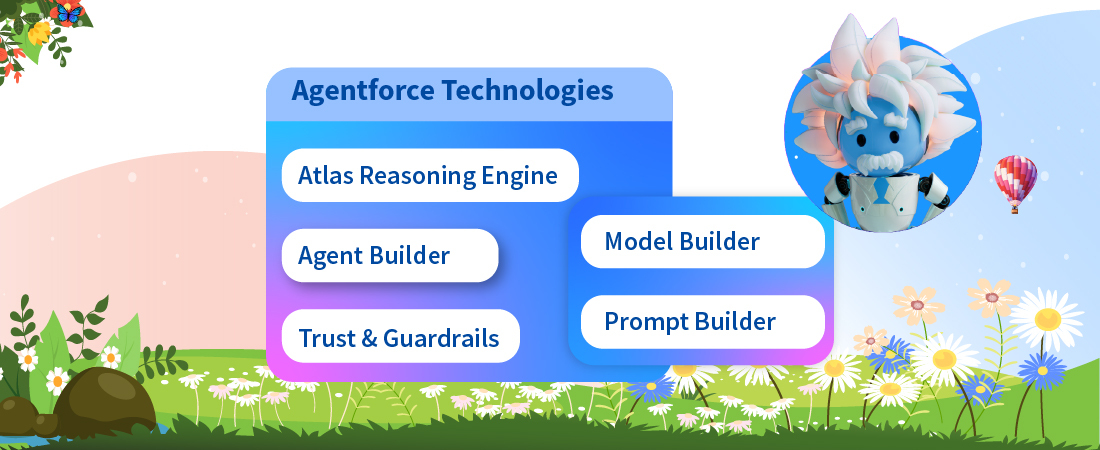Modern consumers are engaging with brands across the channel. They browse through a store, check its price on mobile and order online.
In this new paradigm, companies need to create a seamless shopping experience across the channel. Doing this in an earlier period was a painstaking proposition. As a result, very few off the shelf platforms existed that could offer an Omni commerce platform that gave them the features and agility to undertake this. Hence, Salesforce Commerce Cloud helps corporations achieve just this and more.
Furthermore, research undertaken by Salesforce and Deloitte highlights that, on average, retailers use 39 distinct platforms to manage customer engagement. Such platforms could range from point-of-sale (POS) and mobile to marketing automation, and more.
As a result, with multiple channels involved in a customer journey corporation could miss building a unified view of their customers.
With Salesforce Commerce Cloud platform corporations can leverage artificial intelligence, visual search, and inventory availability ( alongside many other features to build a new mechanism for engaging with their customers).
More recently, developments in the Commerce Cloud allow corporations to leverage innovative mechanisms to engage with customers at every touchpoint. And those touchpoints range from voice, web, mobile, in-store, social media, or even within a chat.
Einstein AI:
Einstein AI allows businesses to integrate Einstein-powered product recommendations.It is not only on their websites but across channels. Even more, with AI-driven recommendations in mobile, retail stores, and across channels, corporations can enable customized experiences across channels.
Image search:
With the new Einstein Visual Search, consumers can click and search for products using just Images. Nonetheless, consumers can also search based on snaps clicked and uploaded from their mobile devices. As a result, it then returns that same product or the closest option that is available.
Inventory Management:
Salesforce Commerce Cloud enables corporations to gain complete visibility into their inventory both in-store and warehouses in real-time. It lets firms enable features like browse in-store and buy online, or purchase online and pick-up in store.
Consequently, by getting complete visibility into the inventory levels companies can also run promotional offers and optimize their supply chains.
Innovating through connected commerce:
With its low code, development practice corporations can leverage the agile driven development framework of Salesforce to deploy solutions faster. The Commerce Cloud lets you spin developer Sandboxes on the fly. Also, improving productivity and providing developers innovative tools for their development, testing, and deployment process is a part of the process.
DMP tagging:
Notably, the Salesforce Commerce Cloud, you can identify and target users from their engagement with a corporation’s brand based off of SKU, Price, and Category. DMP tagging makes this achievable. This feature is particularly useful when a brand wants to personalize it’s marketing campaigns.
Thus, by leveraging DMP features, corporations gain insight into how to engage with their customers. Even more, you could do this through Live Chat, SMS, Social Media, or on the site.

Salesforce Commerce Cloud Integrations:
Salesforce has been a pioneer at building partnerships and integrations, to better serve its customers. It boasts hundreds of consulting partners that support integration, enabling the development of unique customer experiences powered by Salesforce Commerce Cloud.
Leading corporations ranging from Deloitte, Accenture, Capgemini, Publicis, Sapient, and HIC Global Solutions are a part of this network.
Along with building a fantastic consulting partner network, Salesforce has integrated various third-party applications into its ecosystems. As a result, it has extended the platform’s functionality, including:
Cloudinary:
The partnership between Cloudinary and Salesforce Commerce Cloud enables corporations to enhance their digital assets. Also, programmatically publish content to optimize shopping experiences through an innovative media management solution
Vertex:
One of the leading providers of tax technology and services Vertex integration with Salesforce Commerce Cloud allows corporations with advanced tax management features. This integration allows customers that have deployed Commerce Cloud to generate signature-ready.PDF and automate tax calculations.
Pepperjam:
With affiliate marketing acting as a vital source of traffic for some eCommerce players, Pepperjam’s integration does them good. It allows advertisers the capability to reduce their time to market for affiliate marketing programs.
Multiple brands and Multinational:
Salesforce Commerce Cloud comes with native support for more than 25 languages. Thus, it lets corporations rapidly expand their presence in various geographies. By removing challenges around content duplication, a brand can launch sites, and deploy features relevant to local geographies faster.
Therefore, by integrating with Salesforce CRM with existing back-end systems, a firm gets seamless visibility into customer journeys.
Salesforce and Google:
After the recent announcement of Salesforce partnership with Google, its customers can analyze customer touchpoints across all channels. Salesforce blends intimately with Google Analytics allowing firms to capture customer engagements and optimize processes accordingly.
The Cons of Salesforce Commerce Cloud:
The advantages of using Salesforce Commerce Cloud are many, but it certainly has some limitations.
With the extensive set of features offered by these solutions customizing and deploying them to leverage their full capabilities is hard. All that becomes more pronounced when a corporation uses Salesforce’s API to customize features.






